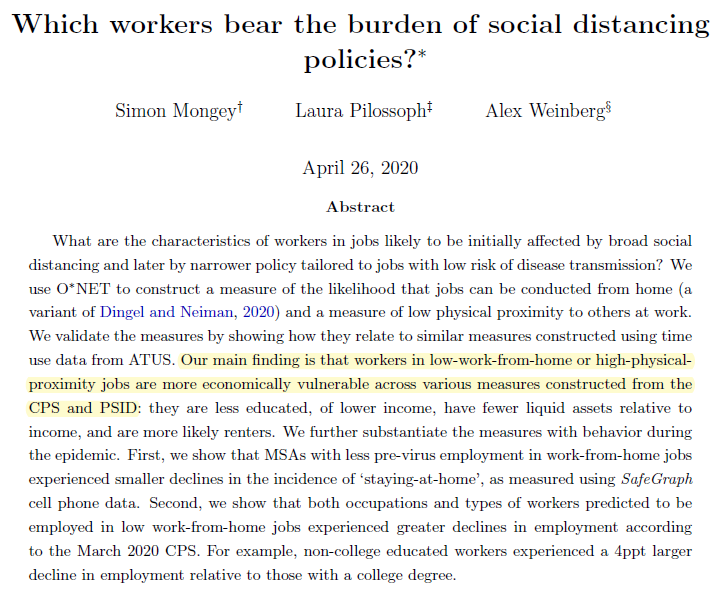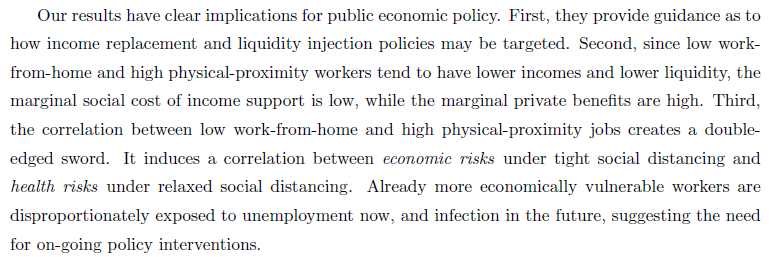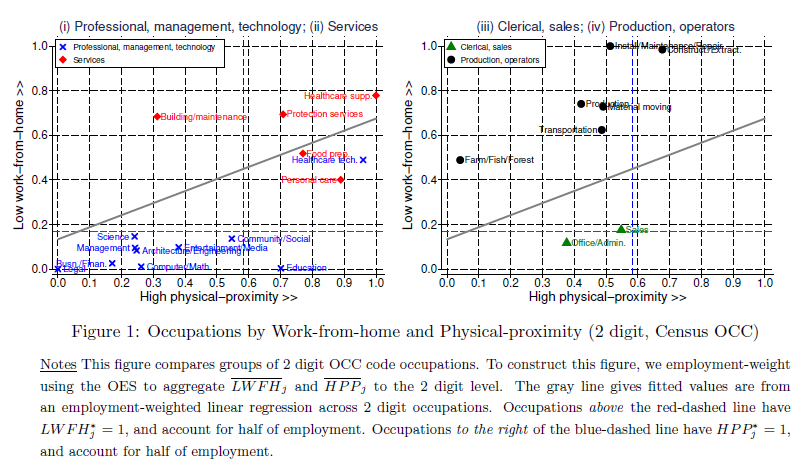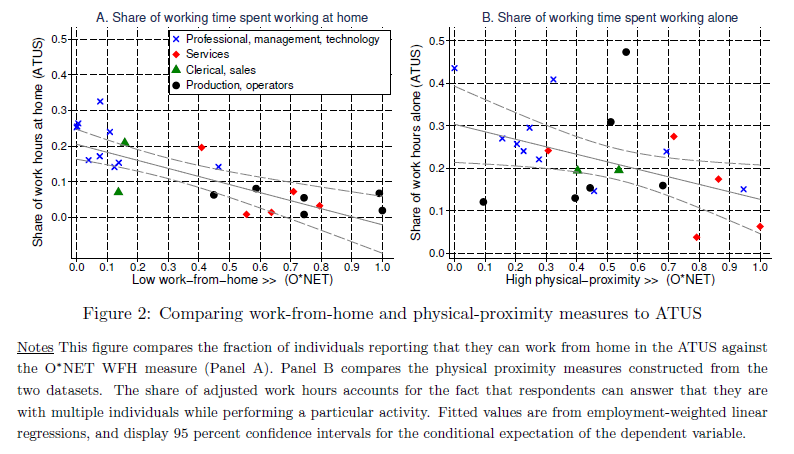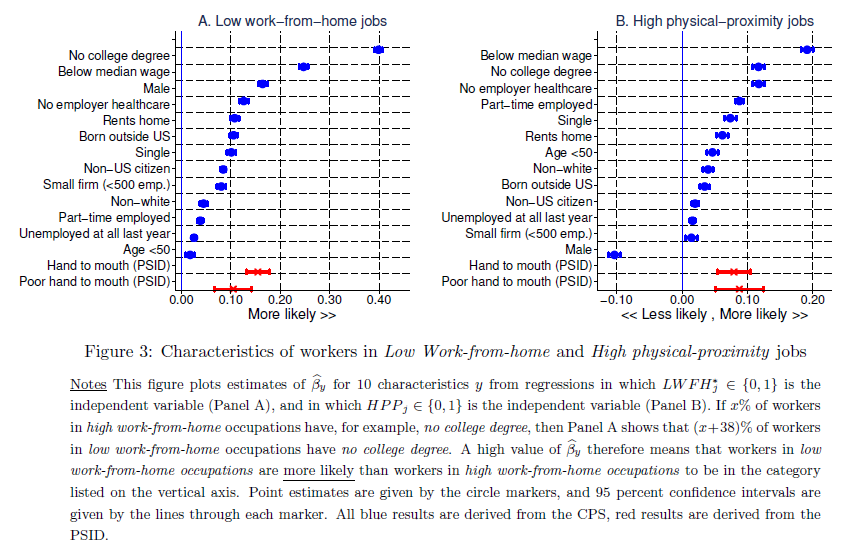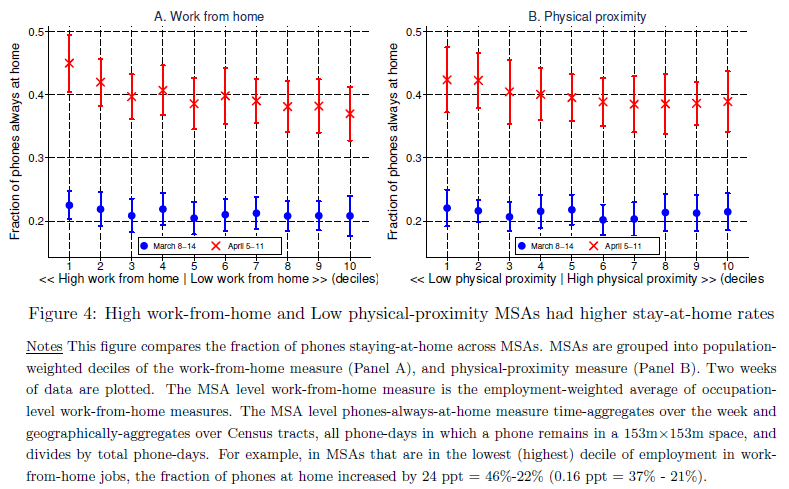1/n Working paper w @AlexWeinberg17 and @pilossopher: Which workers bear the burden of social distancing policies? "Our main finding is that workers in low-work-from-home and high-physical-proximity jobs are more economically vulnerable across various measures".
2/n Main takeaways for policy: (i) lots of scope to target, (ii) high bang-for-buck! low bucks (affected are already low income), high bang (affected have lower liquid assets), (iii) double-edged sword: same, poor, people exposed to economic risk now + health risk on opening
3/n We use O*NET data to construct work-from-home (following @TradeDiversion and @BrentNeiman) and physical proximity at work measures and the OES to carefully cross-walk them over to individual data. This is how occupations look.
4/n We validate the measures by showing that they compare well with what we could glean from ATUS. Hopefully this is useful for other researchers that want validated measures. We& #39;ll have the data online shortly.
5/n We then look at worker characteristics across jobs. This is our main figure. It shows, for example, that workers in low work-from-home jobs are ~25ppt more likely to be below median wage, they are also 12pt more likely to have low liquid assets relative to income (in red)
6/n We then show that these pre-virus measures stack up in the Feb-Mar 2020 CPS. Low work-from-home occ employment contracted more, and the types that had large employment losses line up with our predictions. A 4ppt diff b/w low/high income (3.8m low inc jobs lost, 0.8m high inc)
7/n As further validation we show that MSAs with less employment in low work-from-home jobs experienced smaller increases in the fraction of phones that & #39;stay-at-home& #39; between early-March and mid-April (Thanks @SafeGraph!)
8/n: Forgot... paper here: http://www.simonmongey.com/uploads/6/5/6/6/65665741/mongey_pilossoph_weinberg_work_from_home_april_2020.pdf">https://www.simonmongey.com/uploads/6...

 Read on Twitter
Read on Twitter